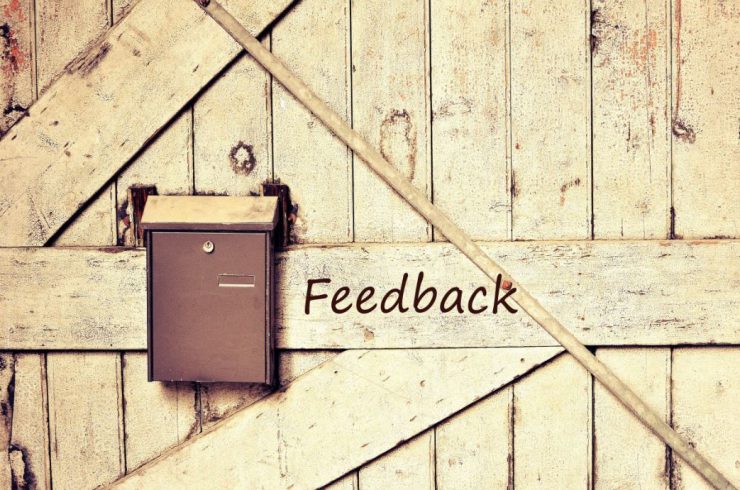With all the effort that goes into planning an event, by the time it’s over you’re ready for a break. While putting your feet up and having a celebratory drink should for sure be on your list, you have one last responsibility.
Send out an event feedback survey. You’ll find out how the event turned out and get suggestions to improve the experience. You’ll also enjoy that well-earned relaxation time better knowing there’s nothing else hanging over your head.
Check out these seven tips for crafting ideal event surveys.
1. Ask Questions Multiple Ways
If you want your attendees to give an honest evaluation, make sure they feel welcome to give honest opinions. The best survey answers are the ones recipients answer off-the-cuff, without overthinking their responses. When you ask questions in different ways, survey-takers give more well-rounded answers.
For example, if you want someone to evaluate a speaker, ask them a question about how relevant the topic was. Then ask them to rate the speaker on different aspects of the talk, like length, expectations, how funny they were, and whatever else gives you perspective on the speaker as a whole.
Use this tactic with any part of the survey, and the responses will give you a better answer than asking only one question directly. Here are more some example questions you can ask.
2. Timing Is Everything
You don’t want to send the survey too late after the event, or you’ll get fewer responses. But you also don’t want to send it too soon, in case guests are still checking out, traveling home, and unwinding from the event. The sweet spot is somewhere in the middle, with very little wiggle room.
The best time is the day after the event so that attendees still remember the event and can give honest answers. They’re still riding the high of being pepped up and excited to use what they learned, so answers may be more favorable.
A week after the event, attendees may forget about the details of the event and won’t give accurate ratings. They start to lose some of the event magic. Being back in the daily grind means they won’t remember how they felt when they were hyped up.
3. Maximize the Design
Survey respondents aren’t interested in plain surveys. If you want to make sure they open your email and bother to respond, use images and videos to entice them. They’ll have less reading that way, too, which makes any survey easier to answer.
The more attractive a survey design is, the more pleasurable the experience is while they answer your questions. This means you won’t get needless negative responses, only honest, critical feedback.
4. Don’t Use Open-Ended Questions for an Event Feedback Survey
While one or two questions that have space for the attendee to write their own answer is fine, any more than that is overwhelming. Respondents don’t have time to write that much, and they don’t care enough.
Instead, keep your questions basic. Use more questions with ratings to click on, yes/no answers to pick, or shortlists to choose from to make answers easy the attendees.
5. Ask for Ideas to Make It Better
Invite your attendees to give you suggestions for next time. Whether you’re still looking for the keynote speaker for next time, or you’re planning to try another venue, you should welcome any help you can get to improve things even further. This is part of the survey you definitely want to ask in multiple ways, as well as giving them a place to leave open-ended responses.
Try a section that rates each aspect of the event, like the food, cleanliness, workshops, cost, etc. Then in your open-ended question, remind them what each section was and ask for ways to improve them, for example, “How can we make your experience with food, cleanliness, workshops, cost, etc. better next year?” Even something like “What can we do to make our next event even better? Remember to include any suggestions about food, cleanliness, workshops, cost, etc.” will work.
6. Keep It Short
Make sure your survey doesn’t take a lot of time to answer. It should only be a few minutes of the respondents’ time, and they shouldn’t have to jump through hoops to get it done.
You should also advertise that it’s short in the email’s subject line so they don’t have to wonder if they’re going to fall down a rabbit hole of survey questions. Let them know with lines like, “Take Our Short Survey from X Event” or “Help Us Make X Event Better With This Short Survey.”
No company wants their survey going in the trash, so give them the incentive to open it and click on the link by promising them an easy time of it.
7. End by Promoting Your Next Event
You may have already told them about the next event at the end of the last one, but a reminder keeps it at the top of their minds. Even if the next event isn’t until next year, let them know to save the dates or give them an idea of what will happen that they can look forward to.
If you have an event coming up sooner than next year, invite them to find out more about it. Give them a brief summary of the event and what’s in it for them, and then include a specific call to action asking them to register.
The people who get to the end of your survey are somewhat invested in the event already. They worked hard to let you know what they thought, so they most likely care more than those who didn’t finish the survey or didn’t click on it at all. That means they’re also the type you want to harness for the next event.
The Answers You Want
When you create an event feedback survey, it should be easy to read, fun to answer, and short enough to finish. With the tips above, you’ll be able to see what your attendees thought of the choices you made.
You’ll also be able to make the event more beneficial to them next time, like when you use Eventzilla for ticketing and registration. Find out more or sign up here.







